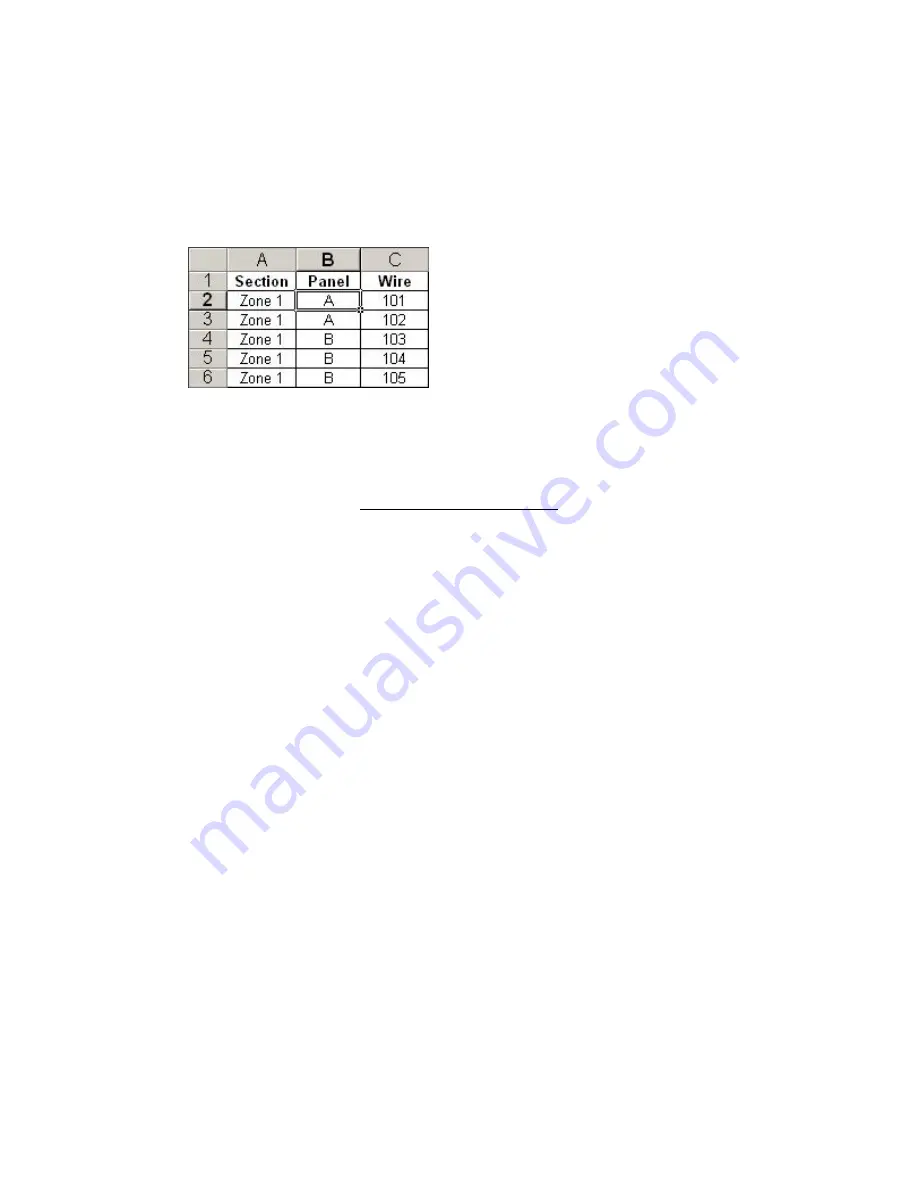
Importing Files
•
Excel
™ or
Lotus 1-2-3
™ spreadsheet
– A
Microsoft® Excel
™ or
Lotus 1-2-3
™ spreadsheet
consists of a heading row followed by the import data. The import wizard allows you to select the
specific worksheet to use if there is more than one in the file. The following is an example of an
Excel
™ spreadsheet:
Note:
When importing a
Lotus 1-2-3
™ spreadsheet, first save it as a WK1, WK3 or WK4 file.
Lotus 1-2-3
™ versions after WK4 are not recognized. If you cannot save to an earlier version,
save your data as a delimited ASCII text file and import it as text.
•
Access™ database
– A
Microsoft® Access
™ database may be presented as forms, reports, or data
access pages, and may contain linked tables. The import wizard automatically connects you to the
database once you select the source, and allows you to select all available tables and fields and
arrange the import order of the data into your labels.
•
Other data source
– The
Other data source
option allows you to import data from virtually any
database or data source (see Importing Data From a Database, below).
Importing Data From a Database
To import database data (as opposed to ASCII text or spreadsheet data, and other than
Microsoft®
Access
™ data) into your label file, you will have to perform a few additional steps to connect to the
database.
To connect to a database (other than
Microsoft® Access
™) file:
1. Follow the first 3 steps of
Importing Data into Label Files (Advanced)
or
Importing Data into
Label Files (Simple)
.
2. On
the
Importing External Data
dialog (Advanced) or
Data Source Type
menu (Simple), select
Other data source
as the type of data source.
3. The
Data Link Properties
dialog appears. Click
Help
for additional assistance if required. Select
the appropriate
OLE DB Provider
and click
Next
. For example:
To import a
Microsoft® SQL Server
™ database, select
Microsoft OLE DB Provider for
SQL Server
To use an
ODBC data source
, select Microsoft OLE DB Provider for ODBC Drivers
4. Enter
the
Connection
information. Click
Help
for additional assistance if required. The required
information varies by provider. For example:
For a
Microsoft® SQL Server
database:
o
Select the server name.
o
Enter logon and password information.
o
Select the database on the server.
o
Click
Test Connection
to confirm the provider, server, logon information and database.
o
Click
OK
.
Importing Files
81
Summary of Contents for LabelMark 3.1
Page 1: ...LabelMark 3 1 User Guide...
Page 2: ......
Page 6: ......
Page 26: ......
Page 72: ......
Page 102: ......
Page 104: ...LabelMark 3 1 User Guide 98 Symbols Guide...
Page 105: ...Symbols Guide Symbols Guide 99...
Page 106: ......






























